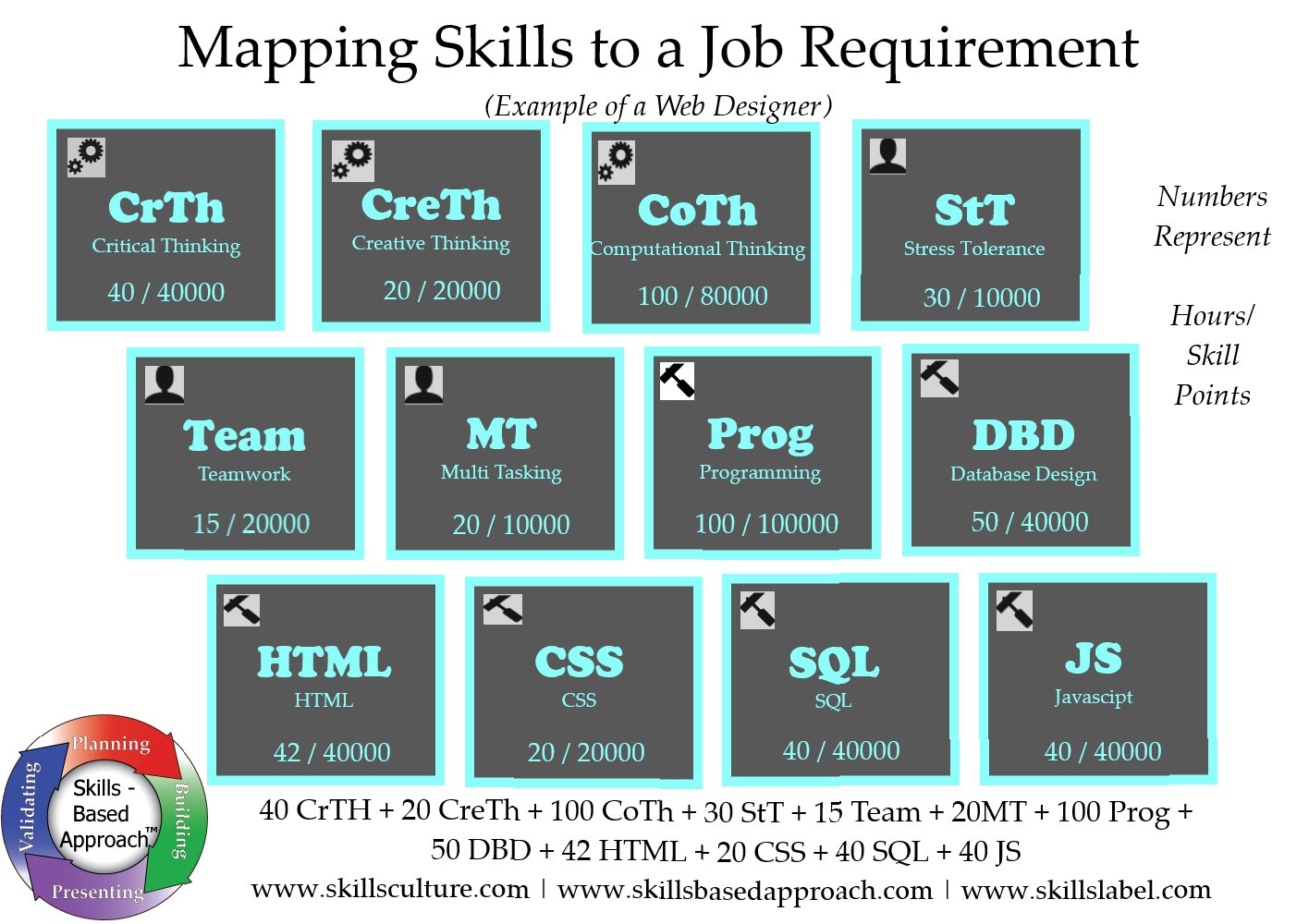A Skills Label TM defines a single unit of learning – a task or project. Also known as a learning labels, this representation is centered on skills, methods and application in applying skills, and education, higher education and training standards. An algorithm calculates Skill Points ®, a next generation learning measurement, which anchors the expectations on a skill by skill basis using a set scale.
The design of the Skills Label system started in 2015 and was officially released in 2016, with an initial design and website application along with two patent applications. In building this system to manage and track skills, the idea started to manifest into taking a more scientific approach to defining learning expectations and later job descriptions using skills. A good analogy is to use skills to define learning and jobs like we use atoms to define substances.
After many years of design, an effective, stable learning label was constructed. Significant attention was put into constructing a standard display, readable to all participants. Skill line items are the focal point of a learning label – a reader’s eyes are drawn to them like vitamins on a nutritional label. Each one of them consists of a skill, the type of skill, a focus value – measuring the intensity and frequency, level of difficulty, a standard (optional way to anchor the expectations), and automatically calculated Skill Points® (based on these reported values and other proprietary ones – such as a skill growth rate).
Combining all the skill line items on a learning label, it is possible to define learning on a task level. Aggregate a series of learning labels to define learning on a project, course, or certification level. Furthermore, aggregate these artifacts together to derive a list of skills and coefficients for a job (as what appears in the graphic).
Recently, jobs labels were developed to show these aggregates. A job label represents the skills section of a job description and is not necessarily meant to replace this well-established content driven standard. Each label also consists of skill line items, expressed in required prior experience and first year application of skill with a sum of Skill Points ®. In theory and practice, the goal is to sum the learning expectations to match what is represented in a job label to determine a worker’s preparedness.
In fact, the Skills Label system includes a hierarchal structure to create pathways. There is functionality to: assign tasks to projects, courses, and/or jobs; projects to courses and/or jobs; and courses to jobs. A pathway is fully transparent as each artifact gets its own URL and unique landing page. So, learning practitioners might construct pathways by building from tasks, projects, or courses they are working on or familiar with.
Ideally, with a well-stocked database of learning and job labels, practitioners and job posters search on resources and construct pathways by mixing and matching resources from different sources – effectively connecting learning institutions and companies hiring jobs. The system already supports two types of searches: one based on context (common search); and another on skills and competencies.
